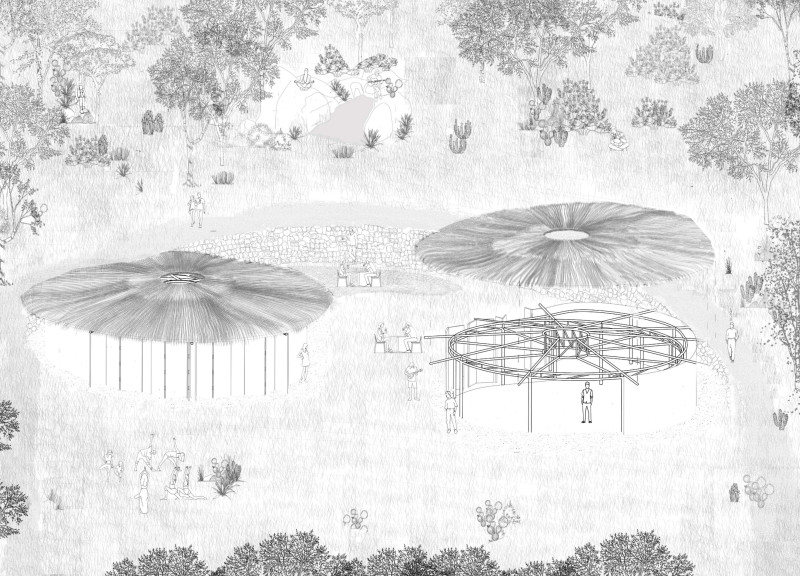5 key facts about this project
The Spirala Ecological Village is located in Castelo Branco, eastern Portugal, offering a thoughtful response to the desires of people seeking smaller, nature-based communities. Aimed at promoting ecological values and stronger community bonds, the design features a spiral layout that enhances movement and interaction among residents, while also considering the area's uneven terrain.
Community Integration
At the heart of the village is a communal gathering space designed for both indoor and outdoor activities. This flexible area invites interactions among residents, encouraging shared experiences and reinforcing social connections. The design recognizes the importance of engagement, aiming to create a welcoming atmosphere that fosters relationships within the community.
Spatial Organization
The layout consists of two main volumes, arranged in a spiral formation. This creates a unique flow through the space that encourages exploration. Residents can easily navigate both private and public areas. The design thoughtfully combines movement and interaction, making it easier for people to come together while maintaining privacy when needed.
Visual Harmony
A key feature of the design is its focus on integrating with the surrounding landscape. The heights of the buildings have been carefully designed to blend with the natural topography, which helps reduce their visual impact. By allowing the landscape to remain the main focal point, the architecture complements the rural setting, ensuring a respectful relationship between built and natural environments.
The presentation does not specify particular materials, suggesting a potential emphasis on sustainability. This indicates that final choices in materials would be made to align with environmental goals. The intention is to create a design that respects the natural surroundings while also prioritizing durability and functionality.

















































